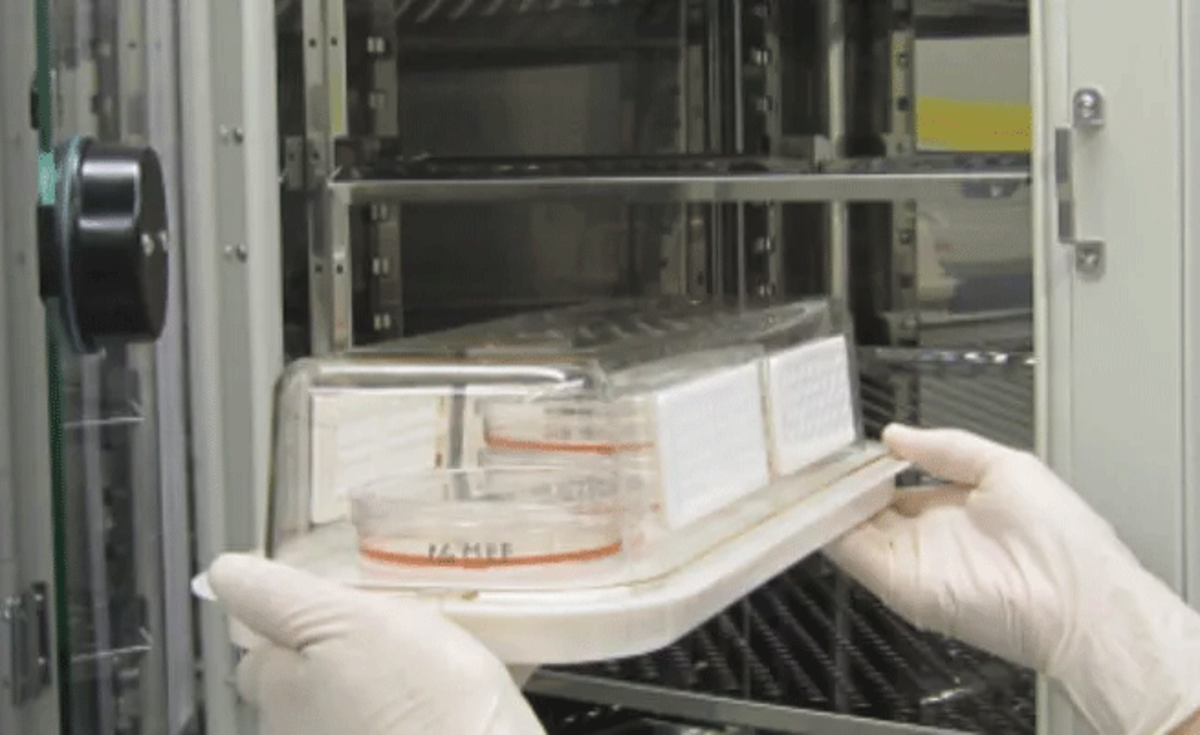Cryopreservation, the process of freezing and storing cells for future use, is important for a broad range of applications. Correct handling of cells both before and during the cryopreservation process is essential for reliable results.
What cell types are commonly used for research?
Modern researchers work with a broad range of cell types, including immortalized cell lines. Well-known examples are Human Embryonic Kidney cells (HEK293); human cancer cell lines such as HeLa, HepG2, and SH-SY5Y; and immortalized animal cell lines like Chinese Hamster Ovary (CHO) cells and various murine fibroblasts (e.g., MEF, 3T3). Advantages of immortalized cell lines are that they are cost effective, easy to handle, and can be maintained in culture for extended periods of time. However, because immortalized cell lines cannot be guaranteed to provide an accurate representation of conditions in vivo, they may not always be the most appropriate choice.

Primary cells such as peripheral blood mononuclear cells (PBMCs) and hepatocytes are isolated directly from a human or animal subject, meaning they retain key morphological and functional characteristics of the tissue source, often in a donor-dependent manner. Yet, because primary cells have only a finite lifetime, they must be used soon after harvest.
Stem cells also have broad utility for scientific research; they comprise embryonic stem cells (ESCs), which are naturally pluripotent, and induced pluripotent stem cells (iPSCs), which are adult somatic cells that have been genetically reprogrammed to function like ESCs.
Why must cells be frozen?
A main reason for freezing cells is to ensure back-up stocks are available should contamination or culture loss occur. Additionally, in the case of immortalized cell lines, cryopreservation helps return working stocks to a low passage number, thereby preventing genetic drift that can result from continuous growth and subculturing. For primary cells and stem cells, which must be used soon after harvest and are more difficult to obtain, cryopreservation is a critical step in ensuring renewable supply. Other reasons for freezing cells include upholding the reproducibility of long-term studies, and allowing safe, convenient shipping.
What does cell freezing typically involve?
While freezing protocols differ based on cell type, they broadly involve harvesting, counting, and centrifuging the cells of interest, before resuspending the resultant pellet in freezing media. The cells can then be aliquoted into cryovials and frozen at -80 °C overnight (either in a controlled rate freezing container designed to decrease the temperature by approximately 1 °C per minute or in an isopropanol chamber), prior to transfer to liquid nitrogen. It is common practice to produce a master bank of around twenty vials of cells, subsequently using this to generate several working banks of a size matching the intended use.

What types of cell freezing media are available?
Although freezing media has traditionally been prepared in-house, usually by adding a cryoprotectant such as Dimethyl Sulfoxide (DMSO) to a growth medium containing fetal bovine serum (FBS), it has become the norm for researchers to purchase freezing media from commercial sources. Off-the-shelf products are optimized for different cell types and applications and encompass DMSO-free, animal-free, and chemically-defined options. The Bambanker™ line of freezing media was developed for long-term storage of highly sensitive cell lines, such as primary cells, iPS cells or mesenchymal stem cells. Its innovative formulation simplifies the freezing process and greatly increases cell viability. With Bambanker™, the viability of cells during freeze/thaw cycles is greatly enhanced, even for fragile cells such as embryonic stem cells.
Advantages of using Bambanker
• Simple protocol for all cell types
• No need for step-wise freezing protocols
• Higher cell viability
• Long term storage at -80°C instead of liquid N2
Best practices for freezing and storing cells
Besides identifying a suitable freezing protocol and freezing medium for the cell type in question, several other best practices are recommended for successful cryopreservation. Confirming that the cells are healthy and free of contamination prior to freezing is of paramount importance. Viability can be monitored using a chromogenic dye such as Trypan Blue or fluorescent stains such as Acridine Orange/Propidium Iodide. Bacterial contamination often manifests as cloudy or discolored growth media. The presence of mycoplasma can be revealed by sending samples for testing via culture-based methods or Polymerase Chain Reaction (PCR), or by using commercially available mycoplasma detection kits.
It is also essential to use proper aseptic technique when culturing and freezing cells; this should include decontaminating the biological safety cabinet before use, wearing appropriate Personal Protective Equipment (PPE), and wiping down flasks and cryovials with 70% ethanol before opening them. Other best practice recommendations include harvesting cells during log phase growth and at above 80% confluency; optimizing the cell concentration for freezing (this is often around 1x106 cells/mL; too low and viability may be compromised, too high and cells may clump together); and maintaining up-to-date records to avoid inadvertently using up the last of a frozen stock further down the line.
LubioScience represents some of the most trusted brands in research, including providers of specialized cell growth media and freezing media.
Contact us today to find out more.




